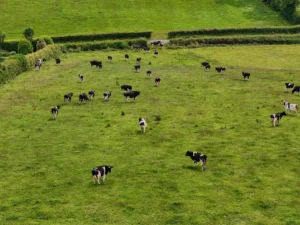
Cattle, greenhouse gases and the case for better methane metrics
Why the global warming potential of methane emissions from cattle production needs a closer look
“People who associate cattle ranching with deforestation are doing so because they don’t know cattle ranching,” says Edson Silva, a rancher who runs one of Brazil’s largest cattle farms. “Every day, we are looking for practices and ways to bring sustainability to the business. I’m proud to be part of it all.”
For those who live outside of Brazil, Edson’s perspective may be surprising. After all, beef production is routinely portrayed in the media as inseparable from deforestation and climate risks.
But what if the same pastures that carry the weight of a nation could also be part of the solution? This question points to a larger truth: that agriculture, at its core, has always put its faith in the future — and Brazilian cattle ranchers are already placing their bets.
From the rice paddies of Asia to the maize fields of Africa, every harvest carries risk. Farmers worldwide depend on the soil, weather and shifting climates, trusting that they will be able to produce enough food to meet growing global demand. And nowhere is this more evident than in Brazil, where ranchers are working every day to help feed the world while also making choices that determine the fate of the country’s biodiverse environment and ecosystem.
Can Brazil save the Amazon while also feeding billions? The challenge is enormous — but so is the opportunity, as the sheer scale of Brazil’s herd and its pastures could make its beef industry less of a liability and more of a solution.
As the world’s largest beef exporter, Brazil is responsible for 21% of all beef traded internationally. At the same time, the country currently hosts more than 40 million hectares of recoverable degraded pasture — an area about the size of California. These pastures, which were once cleared at a great cost to the environment, and to Brazil’s reputation, now offer a chance for producers to restore what was lost and create a more sustainable path forward.
Brazil’s National Program for the Conversion of Degraded Pastures (PNCPD) and the Green Pathway Brazil Program estimate that restoring degraded pastures could double the country’s livestock and grain production capacity without clearing a single tree.
This restoration target stems from both an urgency and an opportunity to meet climate targets, address international concerns over deforestation and increase efficiency in a sector already driving one-fifth of the global beef trade. Restoring Brazil’s degraded pastures would ease pressure on the Amazon rainforest, strengthen Brazil’s climate pledges and keep the food supply steadier for a population that inches closer to 10 billion every day.
The scale of Brazil’s beef industry shows just how much is at stake, as well as how much could be gained through restoration:
Such a massive scale invites scrutiny, but it also gives Brazil a chance to lead, proving that an industry of this size can thrive while safeguarding the land.

Although few outside the country realize it, ranchers in Brazil operate under some of the strictest environmental and land-use laws anywhere on Earth. First enacted in 1965 and revised in 2012, the Forest Code requires landholders to leave large portions of their property untouched: from 20% in southern regions to as much as 80% in the Amazon biome. Under the Forest Code, ranchers must protect rivers, wetlands and hillsides, and if they’ve cleared too much in the past, they are legally required to reforest.
Guided by more than 8,000 environmental and climate laws, Brazilian cattle ranchers operate not only within these rules but with the conviction that the choices they make today will sustain the land and its yields tomorrow. And while it’s true that, globally, agriculture drives about 80% of tropical deforestation, farmers are investing in sustainable farming practices to ensure the decrease of that number — not just for the good of the environment, but to preserve the farming legacies of their families, who for generations have loved the land and depended on it for their livelihoods and futures.
Some of the main focus areas for Brazilian farmers include:
These safeguards form the backbone of Brazil’s broader climate strategy, which now includes a pledge to cut emissions by 59–67% below 2005 levels by 2035 and to reach net-zero by 2050, as outlined in its Second Nationally Determined Contribution.
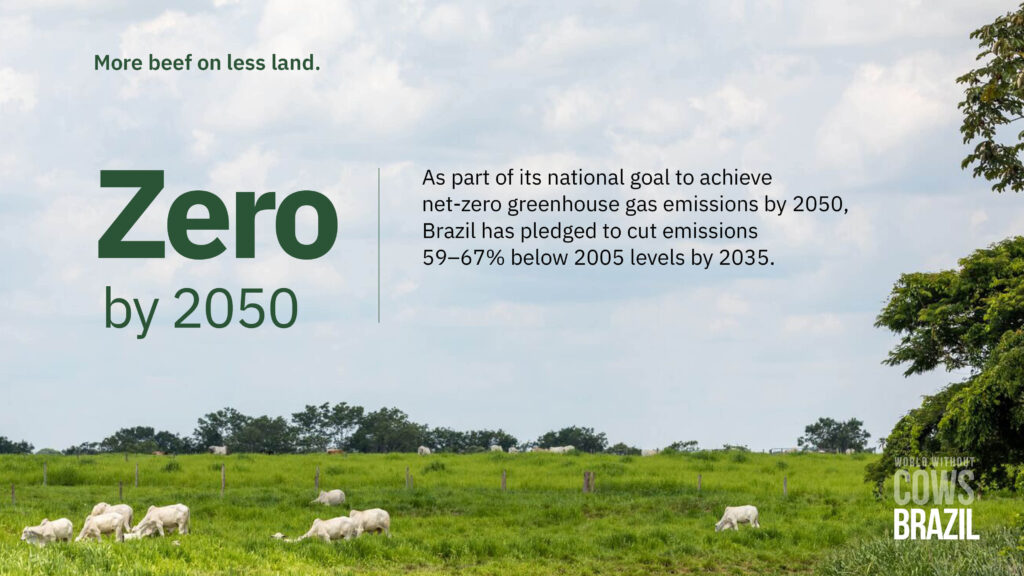
Across Brazil, ranchers are proving that sustainability can scale. Between 2004 and 2023, pastureland dedicated to livestock shrank by 16%, falling to 161 million hectares — even as output increased. This shift reflects advances in pasture recovery, grazing management and integrated crop-livestock-forestry systems. It’s also proof that producing more beef on less land is not just possible; it’s already happening.
Some of the solutions in practice include:
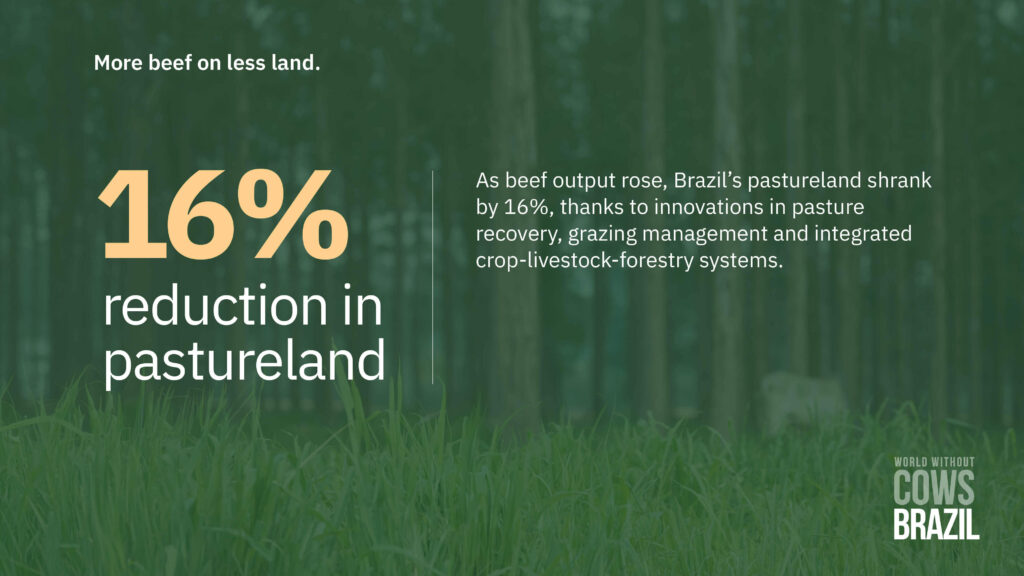
Brazil’s greatest opportunities are well within reach. But lasting, structural outcomes will depend on the design and implementation of policy, along with other choices made today that will impact tomorrow. These four steps could turn Brazil’s potential into measurable impact:
The questions facing Brazil’s ranchers are the same ones facing us all: How do we feed billions without harming the land and the ecosystems we depend on? World Without Cows: The Battle for Balance brings these questions to life through the voices of ranchers on the frontlines, like Edson Silva, who are navigating this defining struggle every day.

Why the global warming potential of methane emissions from cattle production needs a closer look
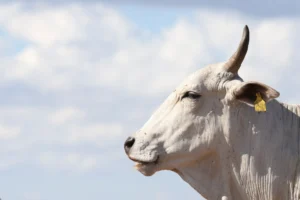
At COP30, the world’s eyes are on Brazil, and the cattle ranchers leading a global transformation.
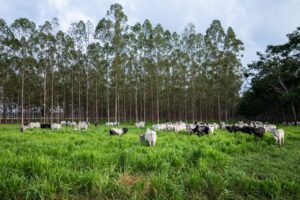
Restoring 40 million hectares of pasture could feed billions and ease pressure on the Amazon. Is the world paying attention?
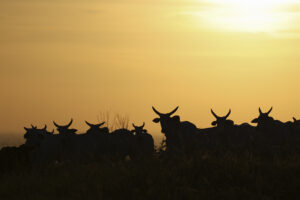
New mini-doc explores deforestation, food security and the Brazilian cattle sector’s path to a more sustainable future
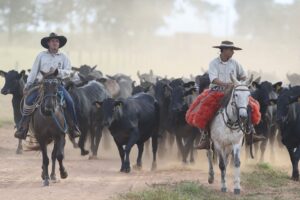
Mention Brazilian beef, and you’re likely to spark discussion about familiar themes: deforestation, emissions and blame. What do we find when we dig deeper? Here are the answers to five top questions about Brazil’s role in protecting the Amazon and feeding the world.
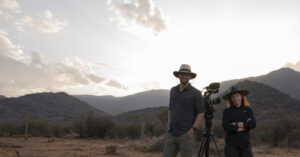
From science to the big screen: Discover how a single question grew into a global journey.
As climate change intensifies and the world’s population continues to grow, the pressure on our global food production system mounts. You can play an active role in shaping a more sustainable planet for future generations. Fill out the form below to learn more about how you can partner with us.
Receive notifications about the release date, new online content and how you can get involved